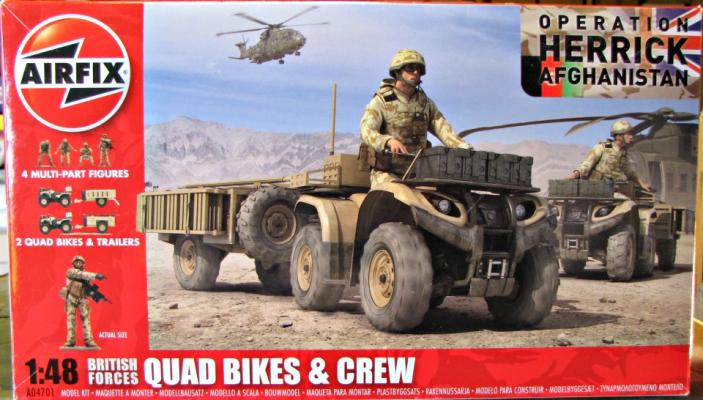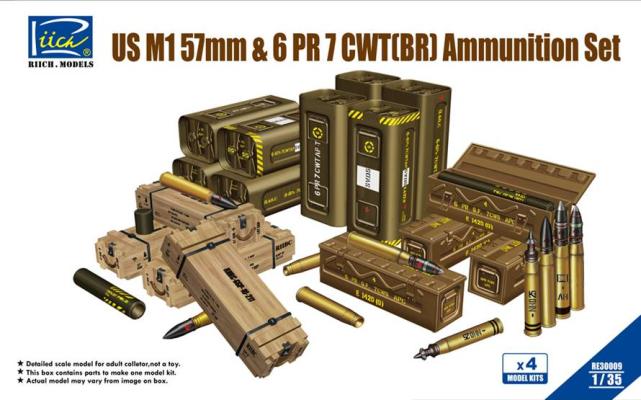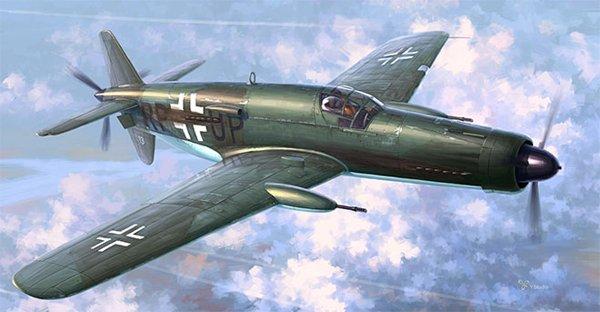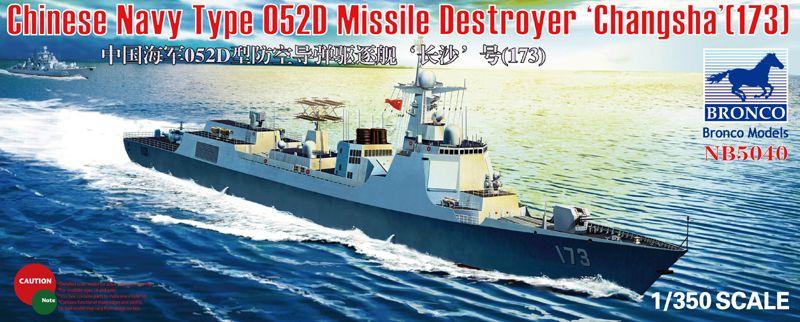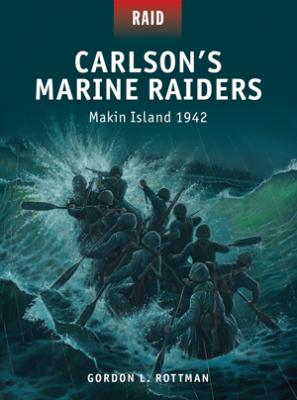Airifx continued their string of new releases related to British forces in Afghanistan with the Quad Bikes and crew. Basically, these are all-terrain vehicles adapted for military use. There are two complete vehicles and their accompanying trailers with four crew members. These are new kits, so the molding is superb. Given the diminutive size of these vehicles, however, the parts are rather fragile so please remove them from the sprues with care. The kits are molded in that familiar Airfix blue-grey plastic. There’s one sprue for the figures, two sprues each for the vehicles and trailers for a total of thirty seven parts. There is a modest decal sheet and colored instructions with 3-D drawings for instructions. As is typical with Airfix kits, the spues are packed together loosely in a plastic bag which means some loose, and this case, broken parts.
Welcome to the IPMS/USA Reviews site!
Introduction: The primary organization of the IPMS/USA Review website is by IPMS/USA National Contest Class. Within each Class there are sub-menus by kits, decals, books, etc. The Miscellaneous Class is for items that are not class specific or that cross two or more classes.
IPMS/USA Members: We encourage you to submit reviews, both here and to the Journal. To volunteer for membership in the IPMS/USA "Reviewers Corps" and submit your own reviews, please read the Guidelines For Submitting Product Reviews.
Manufacturers, publishers, and other industry members: IPMS/USA is pleased to offer your company the opportunity for product reviews. All product reviews are performed by IPMS/USA members, and are posted in the publicly-accessible section of our website. With very few exceptions, we perform full build reviews of new kit releases, aftermarket products, and supplies. If you would care to provide product samples for review, please contact John Noack, IPMS/USA 1st VP.
To learn more about IPMS/USA, please see our About Us page.
Hot on the heels of their release of the British 6 Pdr Mk. IV Anti-Tank Gun (kit #RV35018) and their soon to be released kit of the U.S. M1 57mm Anti-Tank Gun (kit #RV35020), Riich Models has offered up this nice ammunition set: US M1 57mm & 6 PR 7 CWT (BR) as a companion set for their two artillery kits.
The Box
The kit comes packed in a sturdy 6-3/8” x 10-1/4” x 1-3/8” box of the (unfortunately) end-opening variety. Note to kit manufacturers: I know these end-opening type of boxes are cheaper to produce, but for what we pay for kits these days, how about a box with a lid! OK, I’m done complaining. The box ‘top’ features a nice artist’s rendering of the kit contents, which can serve as a good painting guide as well. The ‘bottom’ of the box features assembly instructions and suggested paint call-outs for the kit, in Mr. Hobby, Model Master, Humbrol and Tamiya colors, as well as a decal placement guide.
Yet again: Sincere thanks to Neil at HK models for providing IPMS USA this pre-release kit for review; your contributions are of great value and we look forward to more releases from your company…
… Part 3; final details!
The Type 052D is a Chinese designed and built missile destroyer. It features an active electronically scanned array radar system and it is refer by the Chinese media as the “Chinese Aegis”. There are two ships in the class completed and several more under construction. This kit represents the second ship of the class, “Changsha”.
Upon opening the box you find 13 sprues, 2 photo-etch frets (one of them for the nameplate), one clear sprue for the helicopter and a small decal sheet. The superstructure is packed on its individual box –inside the main box-. Despite the precautions my sample got slightly warped during transit (see photo).
This is a nice sized kit, with the hull being almost 18.5 inches long. There is no option for waterline hull, however there is an flat internal piece –that provides strength to the hull assembly- and some modeler might feel courageous enough to convert the full hull into a waterline model.
Background
The 1st Marine Division landed on Guadalcanal on August 7, 1942 to stop further Japanese expansion. On August 17–18, 1942, the US Marine Corps’ 2nd Raider Battalion conducted an amphibious raid on the Japanese-occupied Makin Island in the South Pacific. This operation was intended to divert Japanese reinforcements bound for Guadalcanal, over 1,000 miles to the southwest. The Raiders were to destroy the seaplane base and radio station, take prisoners, and collect intelligence. The Raiders suffered heavy causalities and even left some Marines behind, but the raid was an invaluable test of the innovative training and tactics employed by the Raiders, and a crucial boost to national morale at this difficult stage in the war.











